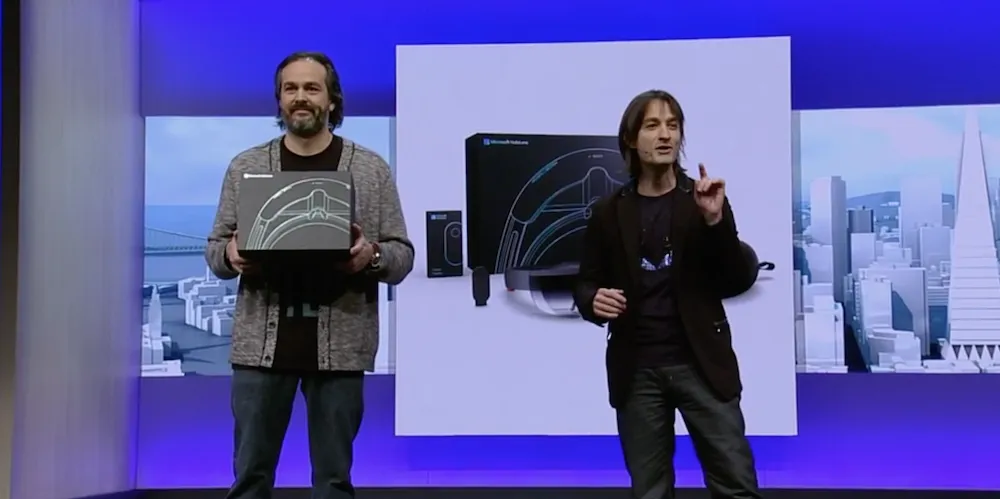Microsoft Build 2016 is underway. The developer focused conference kicked off with a lengthy keynote address this morning that highlighted several of the software giant’s upcoming innovations. One of these is, of course, the much anticipated – and somewhat infamous – HoloLens AR headset.
After announcing that Microsoft will begin shipping the $3,000 dev kits the very day of the keynote, Microsoft’s tech fellow Alex Kipman proceeded to invite up representatives from Cleveland’s Case Western Reserve medical school. The envoy was there to reveal a new HoloLens medical application that gives new meaning to the term off-campus education.
[gfycat data_id=”FlamboyantIllustriousIbadanmalimbe”]
The new system presents the educator to the HoloLens equipped student as a floating head and hands. This may not seem too impactful but, when combined with the anatomy visualization aspects of the service, it becomes vastly more powerful.
[gfycat data_id=”OfficialIncredibleAchillestang”]
One of the med school representatives even said that students who used this system claimed that they were able to learn more in just a few minutes about certain bodily systems than they could through hours in a traditional lab.
Moving past medicine and into the cold vacuum of space, Kipman next displayed a video highlighting Microsoft’s continued HoloLens collaborations with NASA.
[gfycat data_id=”ReadyValidClingfish”]
This experience will take the form of a Kennedy Space Center Exhibit entitled Destination: Mars. The virtual tour of Mars will take Space Center visitors through various locations that NASA’s Curiosity rover has explored since landing in 2012. It will also be hosted, in part, by a digital version of Buzz Aldrin himself.
Skype was the next point of focus for HoloLens upon the Keynote stage. The sizzle reel that was shown for the popular communications app highlighted the long-distance collaboration capabilities possible with the headset.
[gfycat data_id=”ScholarlyLittleEel”]
Real time data sharing and cooperative interactions were all teased in the video as well.
[gfycat data_id=”AllUnhealthyChipmunk”]
All of these demonstrations certainly seem very impressive. However, Microsoft has taken flack in the past for over promising and under delivering when it comes to HoloLens. Field of view has been a particularly sticky issue for the device, with real world use cases falling far below what the company demonstrates at events such as this.
All this is simply to say that Microsoft’s canned demos, while exciting, should be taken with a grain of salt. Now that the dev kits are being released into the wild, we will hopefully be able to gather a more realistic understanding of what HoloLens can actually do.


























